Manual therapy and exercise for lateral elbow pain
- PMID: 38802121
- PMCID: PMC11129914
- DOI: 10.1002/14651858.CD013042.pub2
Manual therapy and exercise for lateral elbow pain
Abstract
Background: Manual therapy and prescribed exercises are often provided together or separately in contemporary clinical practice to treat people with lateral elbow pain.
Objectives: To assess the benefits and harms of manual therapy, prescribed exercises or both for adults with lateral elbow pain.
Search methods: We searched the databases CENTRAL, MEDLINE and Embase, and trial registries until 31 January 2024, unrestricted by language or date of publication.
Selection criteria: We included randomised or quasi-randomised trials. Participants were adults with lateral elbow pain. Interventions were manual therapy, prescribed exercises or both. Primary comparators were placebo or minimal or no intervention. We also included comparisons of manual therapy and prescribed exercises with either intervention alone, with or without glucocorticoid injection. Exclusions were trials testing a single application of an intervention or comparison of different types of manual therapy or prescribed exercises.
Data collection and analysis: Two review authors independently selected studies for inclusion, extracted trial characteristics and numerical data, and assessed study risk of bias and certainty of evidence using GRADE. The main comparisons were manual therapy, prescribed exercises or both compared with placebo treatment, and with minimal or no intervention. Major outcomes were pain, disability, heath-related quality of life, participant-reported treatment success, participant withdrawals, adverse events and serious adverse events. The primary endpoint was end of intervention for pain, disability, health-related quality of life and participant-reported treatment success and final time point for adverse events and withdrawals.
Main results: Twenty-three trials (1612 participants) met our inclusion criteria (mean age ranged from 38 to 52 years, 47% female, 70% dominant arm affected). One trial (23 participants) compared manual therapy to placebo manual therapy, 12 trials (1124 participants) compared manual therapy, prescribed exercises or both to minimal or no intervention, six trials (228 participants) compared manual therapy and exercise to exercise alone, one trial (60 participants) compared the addition of manual therapy to prescribed exercises and glucocorticoid injection, and four trials (177 participants) assessed the addition of manual therapy, prescribed exercises or both to glucocorticoid injection. Twenty-one trials without placebo control were susceptible to performance and detection bias as participants were not blinded to the intervention. Other biases included selection (nine trials, 39%, including two quasi-randomised), attrition (eight trials, 35%) and selective reporting (15 trials, 65%) biases. We report the results of the main comparisons. Manual therapy versus placebo manual therapy Low-certainty evidence, based upon a single trial (23 participants) and downgraded due to indirectness and imprecision, indicates manual therapy may reduce pain and elbow disability at the end of two to three weeks of treatment. Mean pain at the end of treatment was 4.1 points with placebo (0 to 10 scale) and 2.0 points with manual therapy, MD -2.1 points (95% CI -4.2 to -0.1). Mean disability was 40 points with placebo (0 to 100 scale) and 15 points with manual therapy, MD -25 points (95% CI -43 to -7). There was no follow-up beyond the end of treatment to show if these effects were sustained, and no other major outcomes were reported. Manual therapy, prescribed exercises or both versus minimal intervention Low-certainty evidence indicates manual therapy, prescribed exercises or both may slightly reduce pain and disability at the end of treatment, but the effects were not sustained, and there may be little to no improvement in health-related quality of life or number of participants reporting treatment success. We downgraded the evidence due to increased risk of performance bias and detection bias across all the trials, and indirectness due to the multimodal nature of the interventions included in the trials. At four weeks to three months, mean pain was 5.10 points with minimal treatment and manual therapy, prescribed exercises or both reduced pain by a MD of -0.53 points (95% CI -0.92 to -0.14, I2 = 43%; 12 trials, 1023 participants). At four weeks to three months, mean disability was 63.8 points with minimal or no treatment and manual therapy, prescribed exercises or both reduced disability by a MD of -5.00 points (95% CI -9.22 to -0.77, I2 = 63%; 10 trials, 732 participants). At four weeks to three months, mean quality of life was 73.04 points with minimal treatment on a 0 to 100 scale and prescribed exercises reduced quality of life by a MD of -5.58 points (95% CI -10.29 to -0.99; 2 trials, 113 participants). Treatment success was reported by 42% of participants with minimal or no treatment and 57.1% of participants with manual therapy, prescribed exercises or both, RR 1.36 (95% CI 0.96 to 1.93, I2 = 73%; 6 trials, 770 participants). We are uncertain if manual therapy, prescribed exercises or both results in more withdrawals or adverse events. There were 83/566 participant withdrawals (147 per 1000) from the minimal or no intervention group, and 77/581 (126 per 1000) from the manual therapy, prescribed exercises or both groups, RR 0.86 (95% CI 0.66 to 1.12, I2 = 0%; 12 trials). Adverse events were mild and transient and included pain, bruising and gastrointestinal events, and no serious adverse events were reported. Adverse events were reported by 19/224 (85 per 1000) in the minimal treatment group and 70/233 (313 per 1000) in the manual therapy, prescribed exercises or both groups, RR 3.69 (95% CI 0.98 to 13.97, I2 = 72%; 6 trials).
Authors' conclusions: Low-certainty evidence from a single trial in people with lateral elbow pain indicates that, compared with placebo, manual therapy may provide a clinically worthwhile benefit in terms of pain and disability at the end of treatment, although the 95% confidence interval also includes both an important improvement and no improvement, and the longer-term outcomes are unknown. Low-certainty evidence from 12 trials indicates that manual therapy and exercise may slightly reduce pain and disability at the end of treatment, but this may not be clinically worthwhile and these benefits are not sustained. While pain after treatment was an adverse event from manual therapy, the number of events was too small to be certain.
Copyright © 2024 The Cochrane Collaboration. Published by John Wiley & Sons, Ltd.
Conflict of interest statement
Wallis J: none known
Bourne A: none known
Jessup R: none known
Johnston R: none known
Frydman A: none known
Cyril S: none known
Buchbinder R: none known
Figures




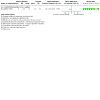

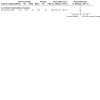




















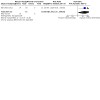
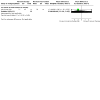













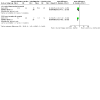






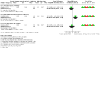










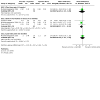







Update of
- doi: 10.1002/14651858.CD013042
Similar articles
-
Stem cell injections for osteoarthritis of the knee.Cochrane Database Syst Rev. 2025 Apr 2;4(4):CD013342. doi: 10.1002/14651858.CD013342.pub2. Cochrane Database Syst Rev. 2025. PMID: 40169165
-
Arthroscopic surgery for degenerative knee disease (osteoarthritis including degenerative meniscal tears).Cochrane Database Syst Rev. 2022 Mar 3;3(3):CD014328. doi: 10.1002/14651858.CD014328. Cochrane Database Syst Rev. 2022. PMID: 35238404 Free PMC article.
-
Manual therapy and exercise for adhesive capsulitis (frozen shoulder).Cochrane Database Syst Rev. 2014 Aug 26;2014(8):CD011275. doi: 10.1002/14651858.CD011275. Cochrane Database Syst Rev. 2014. PMID: 25157702 Free PMC article.
-
Exercise for osteoarthritis of the knee.Cochrane Database Syst Rev. 2024 Dec 3;12(12):CD004376. doi: 10.1002/14651858.CD004376.pub4. Cochrane Database Syst Rev. 2024. PMID: 39625083
-
Exercise for patellar tendinopathy.Cochrane Database Syst Rev. 2025 May 27;5(5):CD013078. doi: 10.1002/14651858.CD013078.pub2. Cochrane Database Syst Rev. 2025. PMID: 40421598 Review.
Cited by
-
Advice to remain active with arm pain reduces disability.Occup Med (Lond). 2023 Jun 26;73(5):268-274. doi: 10.1093/occmed/kqad065. Occup Med (Lond). 2023. PMID: 37261458 Free PMC article. Clinical Trial.
-
Is Lateral Elbow Tendinopathy an Appropriate Clinical Diagnostic Term When the Condition Is Persistent?J Clin Med. 2022 Apr 20;11(9):2290. doi: 10.3390/jcm11092290. J Clin Med. 2022. PMID: 35566416 Free PMC article.
-
Definition and classification for adverse events following spinal and peripheral joint manipulation and mobilization: A scoping review.PLoS One. 2022 Jul 15;17(7):e0270671. doi: 10.1371/journal.pone.0270671. eCollection 2022. PLoS One. 2022. PMID: 35839253 Free PMC article.
-
Analysis of the Effect of Training Driving on Electromyographic Parameters in Trained Karting Drivers: A Study of Fatigue and Its Relationship with Training Practice.J Funct Morphol Kinesiol. 2025 May 26;10(2):190. doi: 10.3390/jfmk10020190. J Funct Morphol Kinesiol. 2025. PMID: 40566440 Free PMC article.
References
References to studies included in this review
Amro 2010 {published data only}
-
- Amro A, Diener I, Bdair WO, Hameda IM, Shalabi AI, Ilyyan DI. The effects of Mulligan mobilisation with movement and taping techniques on pain, grip strength, and function in patients with lateral epicondylitis. Hong Kong Physiotherapy Journal 2010;28(1):19-23.
Bagcaci 2023 {published data only}
-
- Bagcaci S, Unuvar BS, Gercek H, Ugurluc I, Sert OA, Yilmaz K. A randomized controlled trial on pain, grip strength, and functionality in lateral elbow pain: Mulligan vs muscle energy techniques. Journal of Back and Musculoskeletal Rehabilitation 2023;36:419–27. - PubMed
Bisset 2006 {published data only}
-
- Bisset LM, Coppieters MW, Vicenzino B. Sensorimotor deficits remain despite resolution of symptoms using conservative treatment in patients with tennis elbow: a randomized controlled trial. Archives of Physical Medicine & Rehabilitation 2009;90(1):1-8. - PubMed
-
- Gardner J. Waiting rivals injections for tennis elbow. Family Practice News 2007.
-
- NCT00110318. Trial of physiotherapy and corticosteroid injections in lateral epicondylalgia. 2002. https://clinicaltrials.gov/ct2/show/NCT00110318.
Blanchette 2011 {published data only}
-
- Blanchette MA, Normand MC. Augmented soft tissue mobilization vs natural history in the treatment of lateral epicondylitis: a pilot study. Journal of Manipulative & Physiological Therapeutics 2011;34(2):123-30. - PubMed
Bostrøm 2019 {published data only}
-
- NCT02321696. Physiotherapy or acupuncture for lateral epicondylitis. https://clinicaltrials.gov/show/nct02321696 2014.
Coombes 2013 {published data only}
-
- ACTRN12609000051246. Optimisating corticosteroid injection for lateral epicondylalgia with the addition of physiotherapy: a randomised control trial with placebo comparison. http://www.anzctr.org.au/Trial/Registration/TrialReview.aspx?ACTRN=12609.... - PMC - PubMed
-
- Coombes BK, Bisset L, Brooks P, Khan A, Vicenzino B. Effect of corticosteroid injection, physiotherapy, or both on clinical outcomes in patients with unilateral lateral epicondylalgia: a randomized controlled trial. JAMA 2013;309(5):461-9. - PubMed
-
- Coombes BK, Connelly L, Bisset L, Vicenzino B. Economic evaluation favours physiotherapy but not corticosteroid injection as a first-line intervention for chronic lateral epicondylalgia: evidence from a randomised clinical trial. British Journal of Sports Medicine 2016;50(22):1400-5. - PubMed
-
- Vicenzino B, Coombes BK, Bisset L, Brooks P, Khan A. Corticosteroid injection worsened recovery and recurrence of tennis elbow; physiotherapy had no effect. Annals of Internal Medicine 2013;158(10):JC8. - PubMed
Haahr 2003 {published data only}
-
- Haahr JP, Andersen JH. Prognostic factors in lateral epicondylitis: a randomized trial with one-year follow-up in 266 new cases treated with minimal occupational intervention or the usual approach in general practice. Rheumatology 2003;42(10):1216-25. - PubMed
Kochar 2002 {published data only}
-
- Kochar M, Dogra A. Effectiveness of a specific physiotherapy regimen on patients with tennis elbow: clinical study. Physiotherapy 2002;88(6):333-41.
Luginbuhl 2008 {published data only}
-
- Luginbuhl R, Brunner F, Schneeberger AG. No effect of forearm band and extensor strengthening exercises for the treatment of tennis elbow: a prospective randomised study. Chirurgia Degli Organi di Movimento 2008;91(1):35-40. - PubMed
McQueen 2021 {published data only}
-
- McQueen KS, Powell RK, Keener T, Whalley R, Calfee RP. Role of strengthening during nonoperative treatment of lateralepicondyle tendinopathy. Journal of Hand Therapy 2021;34:619-26. - PubMed
Muralidharagopalan 2020 {published data only}
-
- Muralidharagopalan NR, Gopal R, Natarajan S. Addition of eccentric elbow exercises to local corticosteroid injection for tennis elbow – a prospective randomized study. European Journal of Molecular & Clinical Medicine 2020;7(8):3528-37.
Nambi 2023 {published data only}
-
- Nambi G, AlghadierI M, Verma A, Aldhafian OR, Alshahrani NN, Saleh AK, et al. Clinical and radiological effects of corticosteroid injection combined with deep transverse friction massage and Mill’s manipulation in lateral epicondylalgia – a prospective, randomized, single-blinded, sham controlled trial. PLOS One 2023;18(2):1-16. - PMC - PubMed
Nourbakhsh 2008 {published data only}
-
- Nourbakhsh MR, Fearon FJ. The effect of oscillating-energy manual therapy on lateral epicondylitis: a randomized, placebo-control, double-blinded study. Journal of Hand Therapy 2008;21(1):4-13. - PubMed
Olaussen 2015 {published data only}
-
- NCT00826462. Treatment study of steroid injection and physical therapy for acute lateral epicondylitis. https://clinicaltrials.gov/show/NCT00826462 2009.
-
- Olaussen M, Holmedal Ø, Mdala I, Brage S, Lindbæk M. Corticosteroid or placebo injection combined with deep transverse friction massage, Mills manipulation, stretching and eccentric exercise for acute lateral epicondylitis: a randomised controlled trial. BMC Musculoskeletal Disorders 2015;16(122):1-13. - PMC - PubMed
Peterson 2011 {published data only}
Rachold 2023 {published data only}
-
- Rachold W, Reis O, Berger C, Buchmann J. Therapeutic effects of manual therapy on lateral epicondylitis: a randomised controlled trial. Physikalische Medizin, Rehabilitationsmedizin, Kurortmedizin 2023;33:79-86.
Reyhan 2020 {published data only}
-
- Reyhan AC, Sindel D, Dereli EE. The effects of Mulligan’s mobilization with movement technique in patients with lateral epicondylitis. Journal of Back and Musculoskeletal Rehabilitation 2020;33(2020):99-107. - PubMed
Smidt 2002a {published data only}
-
- Hart L. Corticosteroid injections, physiotherapy, or a wait-and-see policy for lateral epicondylitis? Clinical Journal of Sport Medicine 2002;12(6):403-4. - PubMed
-
- Korthals-de Bos IB, Smidt N, Tulder MW, Rutten-van Molken MP, Ader HJ, Windt DA, et al. Cost effectiveness of interventions for lateral epicondylitis: results from a randomised controlled trial in primary care. Pharmacoeconomics 2004;22(3):185-95. - PubMed
-
- Smidt N, Assendelft WJJ, Van Der Windt D, Bouter LM. Corticosteroid injections, physiotherapy or a "wait and see" policy for lateral epicondylitis: a randomised clinical trial. In: 16th Annual Meeting of The International Society of Technology Assessment in Health Care. 2000.
-
- Smidt N, Van Der Windt DAWM, Assendelft WJJ, Deville WLJM, Korthals-de Bos IBC, Bouter LM. Corticosteroid injections, physiotherapy, or a wait-and-see policy for lateral epicondylitis: a randomised controlled trial. Lancet 2002;359(9307):657-62. - PubMed
Soderberg 2012 {published data only}
-
- Soderberg J, Grooten W, Ang BO. Short-term effects of eccentric training on lateral epicondylalgia-a randomized controlled trial. Physiotherapy (United Kingdom) 2011;1:eS434-5. - PubMed
-
- Soderberg J, Grooten WJ, Ang BO. Effects of eccentric training on hand strength in subjects with lateral epicondylalgia: a randomized-controlled trial. Scandinavian Journal of Medicine & Science in Sports 2012;22(6):797-803. - PubMed
Struijs 2004 {published data only}
-
- Struijs PA, Assendelft WJ, Kerkhoffs GM, Souer S, Dijk CN. The predictive value of the extensor grip test for the effectiveness of bracing for tennis elbow. American Journal of Sports Medicine 2005;33(12):1905-9. - PubMed
-
- Struijs PA, Kerkhoffs GM, Assendelft WJ, Van Dijk CN. Conservative treatment of lateral epicondylitis: brace versus physical therapy or a combination of both-a randomized clinical trial. American Journal of Sports Medicine 2004;32(2):462-9. - PubMed
Tonks 2007 {published data only}
-
- Tonks JH, Pai SK, Murali SR. Steroid injection therapy is the best conservative treatment for lateral epicondylitis: a prospective randomised controlled trial. International Journal of Clinical Practice 2007;61(2):240-6. - PubMed
Vuvan 2020 {published data only}
-
- Vuvan V, Vincenzino B, Mellor R, Jamesheales L, Coombes BK. Unsupervised isometric exercise versus wait-and-see for lateral elbow tendinopathy. Medicine & Science in Sports & Exercise 2020;52(2):287-95. - PubMed
Yilmaz 2022 {published data only}
-
- NCT04219488. Investigating the effects of neuromobilization in lateral epicondylitis. https://clinicaltrials.gov/ct2/show/NCT04219488 2020. - PubMed
-
- Yilmaz K, Bayramlar, KY, Ayhan C, Tufekci O. Investigating the effects of neuromobilization in lateralepicondylitis. Journal of Hand Therapy 2022;35:97-106. - PubMed
References to studies excluded from this review
Abbott 2001a {published data only}
-
- Abbott JH. Mobilization with movement applied to the elbow affects shoulder range of movement in subjects with lateral epicondylalgia. Manual Therapy 2001;6(3):170-7. - PubMed
Abbott 2001b {published data only}
-
- Abbott JH, Patla CE, Jensen RH. The initial effects of an elbow mobilization with movement technique on grip strength in subjects with lateral epicondylalgia. Manual Therapy 2001;6(3):163-9. - PubMed
ACTRN12612000993897 {published data only}
-
- ACTRN12612000993897. Effects of prolotherapy injections and an exercise program used singly and in combination for refractory tennis elbow. https://www.anzctr.org.au/Trial/Registration/TrialReview.aspx?ACTRN=1261....
ACTRN12617000219381 {published data only}
-
- ACTRN12617000219381. The influence of aerobic exercise on conditioned pain modulation (CPM) and manipulation induced pain modulation (MIPM) effects in participants with tennis elbow. https://anzctr.org.au/Trial/Registration/TrialReview.aspx?id=372232 2017.
Altun 2018 {published data only}
-
- Altun RD, Incel NA, Cimen O B, Sahin G. Efficacy of ESWT for lateral epicondylitis treatment: comparision with physical therapy modalities. Journal of Musculoskeletal Research 2018;21(1):1-9.
Anitha 2018 {published data only}
-
- Anitha A, Prachi G. Effectiveness of eccentric strengthening of wrist extensors along with conventional therapy in patients with lateral epicondylitis. Research Journal of Pharmacy and Technology 2018;11(12):5340-4.
Bateman 2024 {published data only}
-
- Bateman M, Skeggs A, Whitby E, Fletcher-Barrett V, Stephens G, Dawes M, et al. Optimising physiotherapy for people with lateral elbow tendinopathy - results of a mixed-methods pilot and feasibility randomised controlled trial (OPTimisE). Musculoskeletal Science & Practice 2024;69:102905. [DOI: 10.1016/j.msksp.2023.102905] - DOI - PMC - PubMed
Cleland 2005 {published data only}
-
- Cleland JA, Flynn TW, Palmer JA. Incorporation of manual therapy directed at the cervicothoracic spine in patients with lateral epicondylalgia: a pilot clinical trial. Journal of Manual and Manipulative Therapy 2005;13(3):143-51.
Coombes 2016 {published data only}
-
- Coombes BK, Wiebusch M, Heales L, Stephenson A, Vicenzino B. Isometric exercise above but not below an individual’s pain threshold influences pain perception in people with lateral epicondylalgia. Clinical Journal of Pain 2016;32:1069–75. - PubMed
Croisier 2007 {published data only}
CTRI/2022/02/040270 {published data only}
-
- CTRI/2022/02/040270. Efficacy of marma therapy in comparison with physical therapy in management of tennis elbow. http://www.ctri.nic.in/Clinicaltrials/pmaindet2.php?trialid=64678.
Day 2019 {published data only}
Drechsler 1997 {published data only}
-
- Drechsler WI, Knarr JF, Snyder-Mackler L. A comparison of two treatment regimens for lateral epicondylitis: a randomized trial of clinical interventions. Journal of Sport Rehabilitation 1997;6(3):226-34.
Fernandez‐Carnero 2008 {published data only}
-
- Fernandez-Carnero J, Fernandez-de-las-Penas C, Cleland JA. Immediate hypoalgesic and motor effects after a single cervical spine manipulation in subjects with lateral epicondylalgia. Journal of Manipulative & Physiological Therapeutics 2008;31(9):675-81. - PubMed
Fernandez‐Carnero 2011 {published data only}
-
- Fernandez-Carnero J, Cleland JA, Arbizu RL. Examination of motor and hypoalgesic effects of cervical vs thoracic spine manipulation in patients with lateral epicondylalgia: a clinical trial. Journal of Manipulative & Physiological Therapeutics 2011;34(7):432-40. - PubMed
Gunduz 2012 {published data only}
-
- Gunduz R, Malas FU, Borman P, Kocaoglu S, Ozcakar L. Physical therapy, corticosteroid injection, and extracorporeal shock wave treatment in lateral epicondylitis. Clinical and ultrasonographical comparison. Clinical Rheumatology 2012;31(5):807-12. - PubMed
Gupta 2021 {published data only}
Hsu 2016 {published data only}
-
- Hsu CY, Lee KH, Huang HC, Chang ZY, Chen HY, Yang TH. Manipulation therapy relieved pain more rapidly than acupuncture among lateral epicondylalgia (tennis elbow) patients: a randomized controlled trial with 8-week follow-up. Evidence-based Complementary and Alternative Medicine 2016;3079247:1-7. - PMC - PubMed
IRCT848 {published data only}
-
- IRCT848. Effect of dry needling on radiated pain of shoulder muscles trigger points in tennis elbow patients. https://en.irct.ir/trial/848.
Kamal 2022 {published data only}
-
- Kamal KC, Traistaru MR, Alexandru DO, Kamal AM, Maria DT, Kamal D. Complex rehabilitation program in patients with lateral epicondylitis. Aging Clinical and Experimental Research 2022;34(Suppl 1):S335. [DOI: 10.1007/s40520-022-02147-3] - DOI
Kaux 2022 {published data only}
-
- Kaux JF, Forthomme F, Croisier JL, Demoulin C, Vanderthommen M. Effectiveness of tecar therapy combined with eccentric exercises in lateral elbow tendinopathy. Aging Clinical and Experimental Research 2022;34(Suppl 1):S189. [DOI: 10.1007/s40520-022-02147-3] - DOI
KCT0007378 {published data only}
-
- KCT0007378. Effect of blood flow restriction exercise program on auto-parts factory workers with lateral elbow tendinopathy: randomized controlled trial. https://cris.nih.go.kr/cris/search/detailSearchEn.do?seq=22097.
Khandaker 2014 {published data only}
-
- Khandaker MN, Islam S, Emran A, Islam J, Ahmed SM, Khan MM, et al. The effect of stretching exercise in the management of lateral epicondylitis. Bangladesh Medical Journal 2014;43(2):61-6.
-
- Nuruzzaman KM, Mozaffar AS, Rahman KM, Salek AKM, Emran A. Effect of stretching and strengthening exercise in the management of lateral epicondylitis. International Journal of Rheumatic Diseases 2017;20(Suppl 1):29.
Kucuksen 2013 {published data only}
-
- Kucuksen S, Yilmaz H, Salli A, Ugurlu H. Muscle energy technique versus corticosteroid injection for management of chronic lateral epicondylitis: randomized controlled trial with 1-year follow-up. Archives of Physical Medicine & Rehabilitation 2013;94(11):2068-74. - PubMed
Lee 2018 {published data only}
-
- Shirzhadi Z. The effect of the shoulder muscles strengthening in treatment of patients with tennis elbow. WHO 2018.
Manias 2006 {published data only}
Martinez‐Silvestrini 2005 {published data only}
-
- Martinez-Silvestrini JA, Newcomer KL, Gay RE, Schaefer MP, Kortebein P, Arendt KW. Chronic lateral epicondylitis: comparative effectiveness of a home exercise program including stretching alone versus stretching supplemented with eccentric or concentric strengthening. Journal of Hand Therapy 2005;18(4):411-9. - PubMed
McLean 2002 {published data only}
-
- McLean S, Naish R, Reed L, Urry S, Vicenzino B. A pilot study of the manual force levels required to produce manipulation induced hypoalgesia. Clinical Biomechanics 2002;17(4):304-8. - PubMed
Mostafee 2020 {published data only}
-
- Mostafaee N, Divandari A, Negahban H, Kachooei AR, Moradi A, Ebrahimzadeh MH, et al. Shoulder and scapula muscle training plus conventional physiotherapy versus conventional physiotherapy only: a randomized controlled trial of patients with lateral elbow tendinopathy. Physiotherapy Theory and Practice 2022;38(9):1153-64. [DOI: 10.1080/09593985.2020.1821417] - DOI - PubMed
-
- Mostafaee N, Divandari A, Negahban H, RezaKachooei A, Moradi A, Ebrahimzadeh MH, et al. Shoulder and scapula muscle training plus conventional physiotherapy versus conventional physiotherapy only: a randomized controlled trial of patients with lateral elbow tendinopathy. Physiotherapy Theory and Practice 2020;38(9):1153-64. - PubMed
Nagrale 2009 {published data only}
NCT00930709 {published data only}
-
- NCT00930709. Botulinum toxin versus active strength training in the treatment of lateral epicondylitis (BooST). https://clinicaltrials.gov/show/NCT00930709.
NCT01273688 {published data only}
-
- NCT01273688. Eccentric training with or without elbow brace for epicondylitis. https://clinicaltrials.gov/show/NCT01273688.
NCT01897259 {published data only}
-
- NCT01897259. Comparison of conservative methods for the treatment of lateral epicondylitis: a randomized, prospective study. https://clinicaltrials.gov/ct2/show/NCT01897259.
NCT02052089 {published data only}
-
- NCT02052089. Comparative study for the optimal treatment method of lateral epicondylosis. https://clinicaltrials.gov/ct2/show/NCT02052089.
NCT02304952 {published data only}
-
- NCT02304952. Eccentric exercise or radiofrequent microtenotomy as treatment of lateral epicondylalgia. https://clinicaltrials.gov/ct2/show/study/NCT02304952.
NCT02521298 {published data only}
-
- NCT02521298. Treatment of lateral elbow tendinopathy. https://clinicaltrials.gov/show/NCT02521298.
NCT02930304 {published data only}
-
- NCT02930304. Non-surgical treatment approaches in patients with newly diagnosed lateral epicondylitis: a randomized clinical trial. https://clinicaltrials.gov/show/NCT02930304.
NCT02991560 {published data only}
-
- NCT02991560. Effects of various taping techniques in lateral epicondylitis on functional and ultrasonographic outcomes. https://clinicaltrials.gov/ct2/show/NCT02991560.
NCT03074500 {published data only}
-
- NCT03074500. Kinesiotaping in lateral epicondylitis. https://clinicaltrials.gov/show/NCT03074500.
NCT03161782 {published data only}
-
- NCT03161782. The efficacy of different types of stretching on range of motion, pain and function in elbow limitation. https://clinicaltrials.gov/ct2/show/NCT03161782.
NCT03167710 {published data only}
-
- NCT03167710. Dry needling, manipulation and stretching vs. manual therapy, exercise and ultrasound for lateral epicondylalgia. https://clinicaltrials.gov/show/NCT03167710.
NCT03834090 {published data only}
-
- NCT03834090. Effectiveness of radial extracorporeal shock wave therapy and supervised exercises in lateral epicondylitis. https://clinicaltrials.gov/ct2/show/NCT03834090. - PMC - PubMed
NCT05238090 {published data only}
-
- NCT05238090. Evaluation of the applying a stretching protocol to lateral epicondylitis. https://clinicaltrials.gov/ct2/show/NCT05238090.
NCT05696327 {published data only}
-
- NCT05696327. Eccentric Tyler twist wrist extensor strengthening in lateral epicondylitis. https://clinicaltrials.gov/study/NCT05696327.
NCT06087081 {unpublished data only}
-
- NCT06087081. Mills manipulation and Mulligan PRP affect pain, grip strength and function on lateral epicondylitis. https://classic.clinicaltrials.gov/ct2/show/NCT06087081 2023.
Nilsson 2007 {published data only}
-
- Nilsson P, Thom E, Baigi A, Marklund B, Mansson J. A prospective pilot study of a multidisciplinary home training programme for lateral epicondylitis. Musculoskeletal Care 2007;5(1):36-50. - PubMed
Nilsson 2012 {published data only}
-
- Nilsson P, Baigi A, Sward L, Moller M, Mansson J. Lateral epicondylalgia: a structured programme better than corticosteroids and NSAID. Scandinavian Journal of Occupational Therapy 2012;19(5):404-10. - PubMed
Nishizuka 2017 {published data only}
-
- Nishizuka T, Iwatsuki K, Kurimoto S, Yamamoto M, Hirata H. Efficacy of a forearm band in addition to exercises compared with exercises alone for lateral epicondylitis: a multicenter, randomized, controlled trial. Journal of Orthopaedic Science 2017;22(2):289-94. - PubMed
NTR7223 {published data only}
-
- NTR7223. The effect of US-guided percutaneous needle tenotomy and physiotherapy in lateral elbow tendinopathy (tennis elbow). https://www.trialregister.nl/trial/6432.
Park 2010 {published data only}
Paungmali 2003 {published data only}
-
- Paungmali A, O'Leary S, Souvlis T, Vicenzino B. Hypoalgesic and sympathoexcitatory effects of mobilization with movement for lateral epicondylalgia. Physical Therapy 2003;83(4):374-83. - PubMed
Peterson 2014 {published data only}
-
- NCT00888225. Tennis elbow trial. https://clinicaltrials.gov/show/NCT00888225.
-
- Peterson M, Butler S, Eriksson M, Svardsudd K. A randomized controlled trial of eccentric vs. concentric graded exercise in chronic tennis elbow (lateral elbow tendinopathy). Clinical Rehabilitation 2014;28(9):862-72. - PubMed
Pienimaki 1996 {published data only}
-
- Pienimaki TT, Tarvainen TK, Siira PT, Vanharanta H. Progressive strengthening and stretching exercises and ultrasound for chronic lateral epicondylitis. Physiotherapy 1996;82(9):522-30.
Radpasand 2009 {published data only}
-
- Radpasand M, Owens E. Combined multimodal therapies for chronic tennis elbow: pilot study to test protocols for a randomized clinical trial. Journal of Manipulative & Physiological Therapeutics 2009;32(7):571-85. - PubMed
Ramteke 2020 {published data only}
-
- Ramteke S, Samal S. To study the effect of rotator cuff exercises on tennis elbow. Indian Journal of Public Health Research & Development 2020;11(3):611-4.
Sarkar 2013 {published data only}
-
- Sarkar B, Das PG, Equebal A, Mitra PK, Kumar R, Anwer S. Efficacy of low-energy extracorporeal shockwave therapy and a supervised clinical exercise protocol for the treatment of chronic lateral epicondylitis: a randomised controlled study. Hong Kong Physiotherapy Journal 2013;31(1):19-24.
Sethi 2018 {published data only}
-
- Sethi K, Noohu MM. Scapular muscles strengthening on pain, functional outcome and muscle activity in chronic lateral epicondylalgia. Journal of Orthopaedic Science 2018;23:777-82. - PubMed
Sevier 2015 {published data only}
Sharma 2020 {published data only}
-
- Sunita Sharma S, Kumar P, Chaudhuri P, Malhotra N, Narula H, Chahal A. Is wrist manipulation and low-level laser therapy collectively beneficial for patients with lateral epicondylitis? Indian Journal of Public Health Research & Development 2020;11(5):489-95.
Slater 2006 {published data only}
-
- Slater H, Arendt-Nielsen L, Wright A, Graven-Nielsen T. Effects of a manual therapy technique in experimental lateral epicondylalgia. Manual Therapy 2006;11(2):107-17. - PubMed
Solveborn 1997a {published data only}
-
- Solveborn SA. Radial epicondylalgia ('tennis elbow'): treatment with stretching or forearm band. A prospective study with long-term follow-up including range-of-motion measurements. Scandinavian Journal of Medicine & Science in Sports 1997;7(4):229-37. - PubMed
Stasinopoulos 2006 {published data only}
-
- Stasinopoulos D, Stasinopoulos I. Comparison of effects of Cyriax physiotherapy, a supervised exercise programme and polarized polychromatic non-coherent light (Bioptron light) for the treatment of lateral epicondylitis. Clinical Rehabilitation 2006;20(1):12-23. - PubMed
Stasinopoulos 2009 {published data only}
-
- Stasinopoulos D, Stasinopoulos I, Pantelis M, Stasinopoulou K. Comparing the effects of exercise program and low-level laser therapy with exercise program and polarized polychromatic non-coherent light (bioptron light) on the treatment of lateral elbow tendinopathy. Photomedicine and Laser Surgery 2009;27(3):513-20. - PubMed
Stasinopoulos 2010 {published data only}
-
- Stasinopoulos D, Stasinopoulos I, Pantelis M, Stasinopoulou K. Comparison of effects of a home exercise programme and a supervised exercise programme for the management of lateral elbow tendinopathy. British Journal of Sports Medicine 2010;44(8):579-83. - PubMed
Stasinopoulos 2017 {published data only}
-
- Stasinopoulos D, Stasinopoulos I. Comparison of effects of eccentric training, eccentric-concentric training, and eccentric-concentric training combined with isometric contraction in the treatment of lateral elbow tendinopathy. Journal of Hand Therapy 2017;30(1):13-9. - PubMed
Struijs 2003 {published data only}
-
- Struijs PA, Damen PJ, Bakker EW, Blankevoort L, Assendelft WJ, Dijk CN. Manipulation of the wrist for management of lateral epicondylitis: a randomized pilot study. Physical Therapy 2003;83(7):608-16. - PubMed
Svernlov 2001a {published data only}
-
- Svernlov B, Adolfsson L. Non-operative treatment regime including eccentric training for lateral humeral epicondylalgia. Scandinavian Journal of Medicine & Science in Sports 2001;11(6):328-34. - PubMed
TCTR20200612001 {published data only}
-
- TCTR20200612001. Short-term effects of mindfulness deep transverse friction on tennis elbow. https://www.thaiclinicaltrials.org/show/TCTR20200612001.
Tyler 2010 {published data only}
-
- Tyler TF, Thomas GC, Nicholas SJ, McHugh MP. Addition of isolated wrist extensor eccentric exercise to standard treatment for chronic lateral epicondylosis: a prospective randomized trial. Journal of Shoulder & Elbow Surgery 2010;19(6):917-22. - PubMed
Tyrdal 1998 {published data only}
-
- Tyrdal S, Pettersen OJ. The effect of strength training on 'handball goalie's elbow'--a prospective uncontrolled clinical trial. Scandinavian Journal of Medicine & Science in Sports 1998;8(1):33-41. - PubMed
Verhaar 1996 {published data only}
-
- Verhaar JA, Walenkamp GH, Mameren H, Kester AD, Linden AJ. Local corticosteroid injection versus Cyriax-type physiotherapy for tennis elbow. Journal of Bone & Joint Surgery - British Volume 1996;78(1):128-32. - PubMed
Vicenzino 1996 {published data only}
-
- Vicenzino B, Collins D, Wright A. The initial effects of a cervical spine manipulative physiotherapy treatment on the pain and dysfunction of lateral epicondylalgia. Pain 1996;68(1):69-74. - PubMed
Vicenzino 2001 {published data only}
-
- Vicenzino B, Paungmali A, Buratowski S, Wright A. Specific manipulative therapy treatment for chronic lateral epicondylalgia produces uniquely characteristic hypoalgesia. Manual Therapy 2001;6(4):205-12. - PubMed
Viswas 2012 {published data only}
Wegener 2016 {published data only}
-
- Wegener RL, Brown T, O'Brien L. A randomized controlled trial of comparative effectiveness of elastic therapeutic tape, sham tape or eccentric exercises alone for lateral elbow tendinosis. Hand Therapy 2016;21(4):131-9.
Zunke 2020 {published data only}
-
- DRKS00013964. Manual mobilization of the thoracic spine: effect on pain free grip and sympathetic nervous system activity on patients with lateral epicondylitis humeri. https://www.drks.de/drks_web/navigate.do?navigationId=trial.HTML&TRI....
-
- Zunke P, Auffarth A, Hitzl W, Moursy M. The effect of manual therapy to the thoracic spine on pain-free grip and sympathetic activity in patients with lateral epicondylalgia humeri. A randomized, sample sized planned, placebo-controlled, patient-blinded monocentric trial. BMC Musculoskeletal Disorders 2020;21(186):1-11. - PMC - PubMed
References to studies awaiting assessment
Bartlett 2007 {published data only}
-
- ISRCTN89551492. An investigation of the effectiveness of a mobilisation with movement (MWM) technique for lateral epicondylagia on pain and function in clinical practice. http://www.isrctn.com/ISRCTN89551492 2007.
References to ongoing studies
Prat 2018 {published data only}
-
- Prat P I, Cibrowski D, Zuliani A, Stecco A. Efficacy of fascial manipulation and eccentric exercise for lateral elbow pain. In: Journal of Bodywork & Movement Therapies. Vol. 22. 2018:845-72.
Sahebjamei 2019 {published data only}
-
- IRCT20180812040773N1. The role of elbow exercises protocol in treatment of patients with lateral epycodylitis (tennis elbow). https://en.irct.ir/trial/33707 2019.
Sveinall 2022 {published data only}
-
- NCT04803825. The NOrwegian Tennis Elbow (NOTE) Study. https://clinicaltrials.gov/study/NCT04803825 2022.
Takamjani 2019 {published data only}
-
- IRCT20190315043058N1. The effect of Mulligan's techniques along with routine physiotherapy, in comparison with routine physiotherapy alone; on pain, grip strength, and function in patients diagnosed with chronic lateral epicondylitis. https://en.irct.ir/trial/38410 2019.
Additional references
AAOS 2020
-
- American Academy of Orthopaedic Surgeons. Tennis elbow (lateral epicondylitis). https://orthoinfo.aaos.org/en/diseases--conditions/tennis-elbow-lateral-... (accessed 6 May 2022).
Abrams 2012
-
- Abrams GD, Renstrom PA, Safran MR. Epidemiology of musculoskeletal injury in the tennis player. British Journal of Sports Medicine 2012;46:492–8. - PubMed
Alizadehkhaiyat 2007
-
- Alizadehkhaiyat O, Fisher AC, Kemp GJ, Frostick SP. Pain, functional disability, and psychologic status in tennis elbow. Clinical Journal of Pain 2007;23:482-9. - PubMed
APA 2015
-
- Australian Physiotherapy Association. What is physiotherapy? www.physiotherapy.asn.au (accessed 2 April 2015).
Bisset 2005
Buchbinder 2005
Buchbinder 2011
Busija 2020
-
- Busija L, Ackerman IN, Haas R, Wallis J, Nolte S, Bentley S, et al. Adult measures of general health and health-related quality of life. Arthritis Care & Research 2020;72:522-64. - PubMed
Caspersen 1985
Clarke 2010
-
- Clarke AW, Ahmad M, Curtis M, Connell DA. Lateral elbow tendinopathy: correlation of ultrasound findings with pain and functional disability. American Journal of Sports Medicine 2010;38:1209-14. - PubMed
Coombes 2010
-
- Coombes BK, Bisset L, Vicenzino B. Efficacy and safety of corticosteroid injections and other injections for management of tendinopathy: a systematic review of randomised controlled trials. Lancet 2010;376(9754):1751-67. - PubMed
Coombes 2015
-
- Coombes BK, Bisset L, Vicenzino B. Management of lateral elbow tendinopathy: one size does not fit all. Journal of Orthopaedic & Sports Physical Therapy 2015;45(11):938-49. - PubMed
Coombes 2016
-
- Coombes BK, Wiebusch M, Heales L, Stephenson A, Vicenzino B. Isometric exercise above but not below an individual's pain threshold influences pain perception in people with lateral epicondylalgia. Clinical Journal of Pain 2016;32(12):1069-75. - PubMed
Deeks 2022
-
- Deeks JJ, Higgins JPT, Altman DG (editors). Chapter 10: Analysing data and undertaking meta-analyses. In: Higgins JPT, Thomas J, Chandler J, Cumpston M, Li T, Page MJ, Welch VA (editors). Cochrane Handbook for Systematic Reviews of Interventions version 6.3 (updated February 2022). Cochrane, 2022.. Available from www.training.cochrane.org/handbook.
Frank 1984
-
- Frank C, Akeson WH, Woo SL, Amiel D, Coutts RD. Physiology and therapeutic value of passive joint motion. Clinical Orthopaedics and Related Research 1984;185:113-25. - PubMed
Fu 2018
Giray 2019
-
- Giray E, Karali-Bingul D, Akyuz G. The effectiveness of kinesiotaping, sham taping or exercises only in lateral epicondylitis treatment: a randomized controlled study. PM R 2019;11(7):681-93. - PubMed
GRADEpro GDT 2015 [Computer program]
-
- GRADEpro GDT. Hamilton (ON): McMaster University (developed by Evidence Prime), 2015. Available at gradepro.org.
Green 2002
Herd 2008
Higgins 2017
-
- Higgins JP, Altman DG, Sterne JAC, editor(s). Chapter 8: Assessing risk of bias in included studies. In: Higgins JPT, Churchill R, Chandler J, Cumpston MS (editors), Cochrane Handbook for Systematic Reviews of Interventions version 5.2.0 (updated June 2017). The Cochrane Collaboration, 2017. Available from training.cochrane.org/handbook/archive/v5.2/.
Higgins 2022
-
- Higgins JPT, Li T, Deeks JJ (editors). Chapter 6: Choosing effect measures and computing estimates of effect. In: Higgins JPT, Thomas J, Chandler J, Cumpston M, Li T, Page MJ, Welch VA (editors). Cochrane Handbook for Systematic Reviews of Interventions version 6.3 (updated February 2022). Cochrane, 2022. Available from www.training.cochrane.org/handbook.
Higgins 2023
-
- Higgins JPT, Li T, Deeks JJ (editors). Chapter 6: Choosing effect measures and computing estimates of effect. In: Higgins JPT, Thomas J, Chandler J, Cumpston M, Li T, Page MJ, Welch VA (editors). Cochrane Handbook for Systematic Reviews of Interventions version 6.4 (updated August 2023). Cochrane, 2023. Available from www.training.cochrane.org/handbook.
Hoogvliet 2013
-
- Hoogvliet P, Randsdorp MS, Dingemanse R, Koes BW, Huisstede BMA. Does effectiveness of exercise therapy and mobilisation techniques offer guidance for the treatment of lateral and medial epicondylitis? A systematic review. British Journal of Sports Medicine 2013;47:1112-9. - PubMed
Hudak 1996
-
- Hudak PL, Amadio PC, Bombardier C. Development of an upper extremity outcome measure: the DASH (disabilities of the arm, shoulder and hand). The Upper Extremity Collaborative Group (UECG). American Journal of Industrial Medicine 1996;29(6):602-8. [DOI: 10.1002/(SICI)1097-0274(199606)29:6<602::AID-AJIM4>3.0.CO;2-L] - DOI - PubMed
Hume 2006
-
- Hume PA, Reid D, Edwards T. Epicondylar injury in sport: epidemiology, type, mechanisms, assessment, management and prevention. Sports Medicine 2006;36:151-70. - PubMed
Ikonen 2022
Javed 2016
Johns 2020
-
- Johns N, Shridhar V. Lateral epicondylitis: current concepts. Australian Journal of General Practice 2020;49(11):707-9. - PubMed
Karanasios 2020
-
- Karanasios S, Korakakis V, Whiteley R, Vasilogeorgis I, Woodbridge S, Gioftsos G. Exercise interventions in lateral elbow tendinopathy have better outcomes than passive interventions, but the effects are small: a systematic review and meta-analysis of 2123 subjects in 30 trials. British Journal of Sports Medicine 2020;0:1-10. - PubMed
Karjalainen 2021
Karjalainen 2023
Kim 2020
-
- Kim YJ, Wood SM, Yoon AP, Howard JC, Yang LY, Chung KC. Efficacy of nonoperative treatments for lateral epicondylitis: a systematic review and meta-analysis. Hand/Peripheral Nerve 2020;147:112-25. - PubMed
Kohia 2008
-
- Kohia M, Brackle J, Byrd K, Jennings A, Murray W, Wilfong E. Effectiveness of physical therapy treatments on lateral epicondylitis. Journal of Sport Rehabilitation 2008;17(2):119-36. - PubMed
Konarski 2023
Lo 2007
-
- Lo MY, Safran MR. Surgical treatment of lateral epicondylitis: a systematic review. Clinical Orthopaedics and Related Research 2007;463:98-106. - PubMed
Mallen 2009
-
- Mallen CD, Chesterton LS, Hay EM. Tennis elbow. BMJ 2009;339:b3180. - PubMed
McDowell 2014
-
- McDowell JM, Johnson GM, Hetherington BH. Mulligan concept manual therapy: standardizing annotation. Manual Therapy 2014;19(5):499-503. - PubMed
Newcomer 2005
-
- Newcomer KL, Martinez-Silvestrini JA, Schaefer MP, Gay R, Arendt K. Sensitivity of the patient-rated forearm evaluation questionnaire in lateral epicondylitis. Journal of Hand Therapy 2005;18:400-6. - PubMed
Nirschl 1979
-
- Nirschl RP, Pettrone FA. Tennis elbow. The surgical treatment of lateral epicondylitis. Journal of Bone and Joint Surgery 1979;61(6A):832-9. - PubMed
Overend 1999
-
- Overend T, Wouri-Fearn J, Kramer J, MacDermaid J. Reliability of a patient rated forearm evaluation questionnaire for patients with lateral epicondylitis. Journal of Hand Therapy 1999;12:31-7. - PubMed
Page 2014a
Page 2014b
Page 2016a
Page 2016b
Page 2022
-
- Page MJ, Higgins JPT, Sterne JAC. Chapter 13: Assessing risk of bias due to missing results in a synthesis. In: Higgins JPT, Thomas J, Chandler J, Cumpston M, Li T, Page MJ, Welch VA (editors). Cochrane Handbook for Systematic Reviews of Interventions version 6.3 (updated February 2022). Cochrane, 2022. Available from www.training.cochrane.org/handbook.
Pattanittum 2013
Paungmali 2003
-
- Paungmali A, O’Leary S, Souvlis T, Vicenzino B. Hypoalgesic and sympathoexcitatory effects of mobilization with movement for lateral epicondylalgia. Physical Therapy 2003;83(4):374-83. - PubMed
Pienimäki 1996
-
- Pienimäki T, Tarveinen T, Siira P, Vanharanta H. Progressive strengthening and stretching exercises and ultrasound for chronic lateral epicondylitis. Physiotherapy 1996;82:522-30.
Poltawski 2011
-
- Poltawski L, Watson T. Measuring clinically important change with the Patient-rated Tennis Elbow Evaluation. Hand Therapy 2011;16(3):52-7.
Pompilio da Silva 2018
-
- Pompilio da Silva M, Tamaoki MJS, Blumetti FC, Belloti JC, Smidt N, Buchbinder R. Electrotherapy modalities for lateral elbow pain. Cochrane Database of Systematic Reviews 2018, Issue 6. Art. No: CD013041. [DOI: 10.1002/14651858.CD013041] - DOI
PRISMA Statement 2020
Regan 1992
-
- Regan W, Wold LE, Coonrad R, Morrey BF. Microscopic histopathology of chronic refractory lateral epicondylitis. American Journal of Sports Medicine 1992;20(6):746-9. - PubMed
RevMan Web 2020 [Computer program]
-
- Review Manager Web (RevMan Web). Version 3.1.2. The Cochrane Collaboration, 2020. Available at revman.cochrane.org.
Rompe 2007
-
- Rompe JD, Overend TJ, MacDermid JC. Validation of the Patient-rated Tennis Elbow Evaluation Questionnaire. Journal of Hand Therapy 2007;20:3-10. - PubMed
Sanders 2015
Schünemann 2022
-
- Schünemann HJ, Higgins JPT, Vist GE, Glasziou P, Akl EA, Skoetz N, et al. Chapter 14: Completing ‘Summary of findings’ tables and grading the certainty of the evidence. In: Higgins JPT, Thomas J, Chandler J, Cumpston M, Li T, Page MJ, Welch VA (editors). Cochrane Handbook for Systematic Reviews of Interventions version 6.3 (updated February 2022). Cochrane, 2022. Available from www.training.cochrane.org/handbook.
Schünemann 2022a
-
- Schünemann HJ, Vist GE, Higgins JPT, Santesso N, Deeks JJ, Glasziou P, et al. Chapter 15: Interpreting results and drawing conclusions. In: Higgins JPT, Thomas J, Chandler J, Cumpston M, Li T, Page MJ, Welch VA (editors). Cochrane Handbook for Systematic Reviews of Interventions version 6.3 (updated February 2022). Cochrane, 2022. Available from www.training.cochrane.org/handbook.
Seiça 2023
-
- Seiça EC, Buruian A, Gameiro D, Peixoto D, Pereira C. Lateral epicondylitis: current concepts in pathology, investigation, and management. SN Comprehensive Clinical Medicine 2023;5(65):1-9.
Shiri 2011
-
- Shiri R, Viikari-Juntura E. Lateral and medial epicondylitis: role of occupational factors. Best Practice & Research Clinical Rheumatology 2011;25:43-57. - PubMed
Silverstein 2006
-
- Silverstein BA, Adam D. Work-related disorders of the back and upper extremity in Washington State, 1989-1996. Olympia, Washington: SHARP Program, Washington State Department of Labor and Industries 2006.
Slade 2016
-
- Slade SC, Dionne CE, Underwood M, Buchbinder R. Consensus on Exercise Reporting Template (CERT): explanation and elaboration statement. British Journal of Sports Medicine 2016;50:1428-37. - PubMed
Smidt 2003
-
- Smidt N, Assendelft WJ, Arola H, Malmivaara A, Green S, Buchbinder R, et al. Effectiveness of physiotherapy for lateral epicondylitis: a systematic review. Annals of Medicine 2003;35(1):51-62. - PubMed
Stahl 1997
-
- Stahl S, Kaufman T. The efficacy of an injection of steroidsfor medial epicondylitis. A prospective study of sixty elbows. Journal of Bone and Joint Surgery 1997;79:1648–52. - PubMed
Stata 2017 [Computer program]
-
- Stata. Version 15. College Station, TX, USA: StataCorp, 2017. Available at www.stata.com.
Struijs 2002
Sullivan 1993
-
- Sullivan M, Karlsson J, Bengtsson C, Furunes B, Lapidus L, Lissner L. ‘The Goteborg Quality of Life Instrument’ — a psychometric evaluation of assessments of symptoms and well-being among women in a general population. Scandinavian Journal of Primary Health Care 1993;11:267–75. - PubMed
Vicenzino 2003
-
- Vicenzino B. Lateral epicondylalgia: a musculoskeletal physiotherapy perspective. Manual Therapy 2003;8:66-79. - PubMed
Vicenzino 2011
-
- Vicenzino B, Hing W, Hall T, Rivett D. Mobilisation with Movement: the Art and the Science. Elsevier Australia, 2011.
Walker‐Bone 2012
Wan 2014
Westad 2019
-
- Westad K, Tjoestolvsen F, Hebron C. The effectiveness of Mulligan's mobilisation with movement (MWM) on peripheral joints in musculoskeletal (MSK) conditions: a systematic review. Musculoskeletal Science and Practice 2019;39:157-63. - PubMed
References to other published versions of this review
Publication types
MeSH terms
Substances
LinkOut - more resources
Full Text Sources
Medical
Miscellaneous

